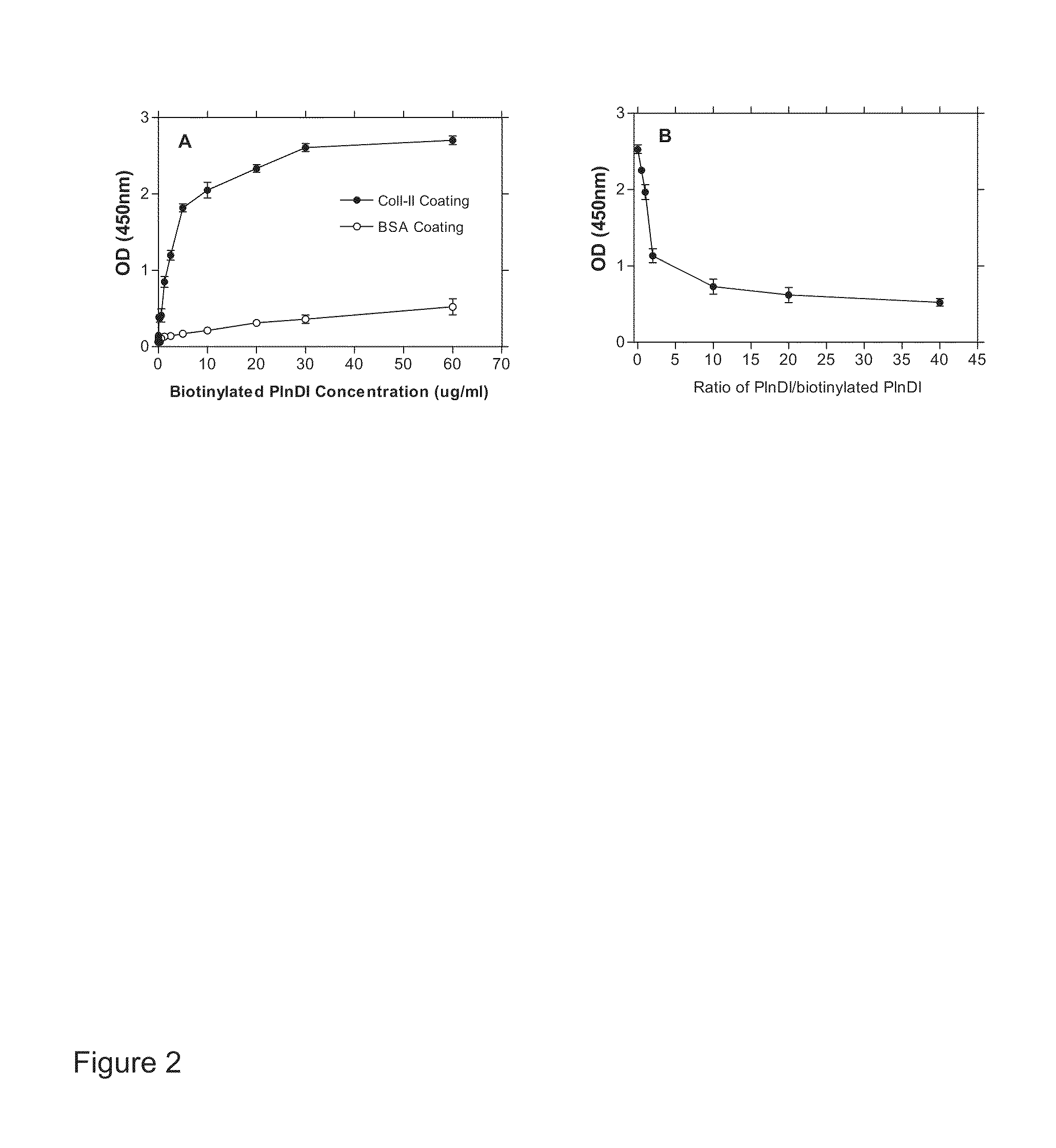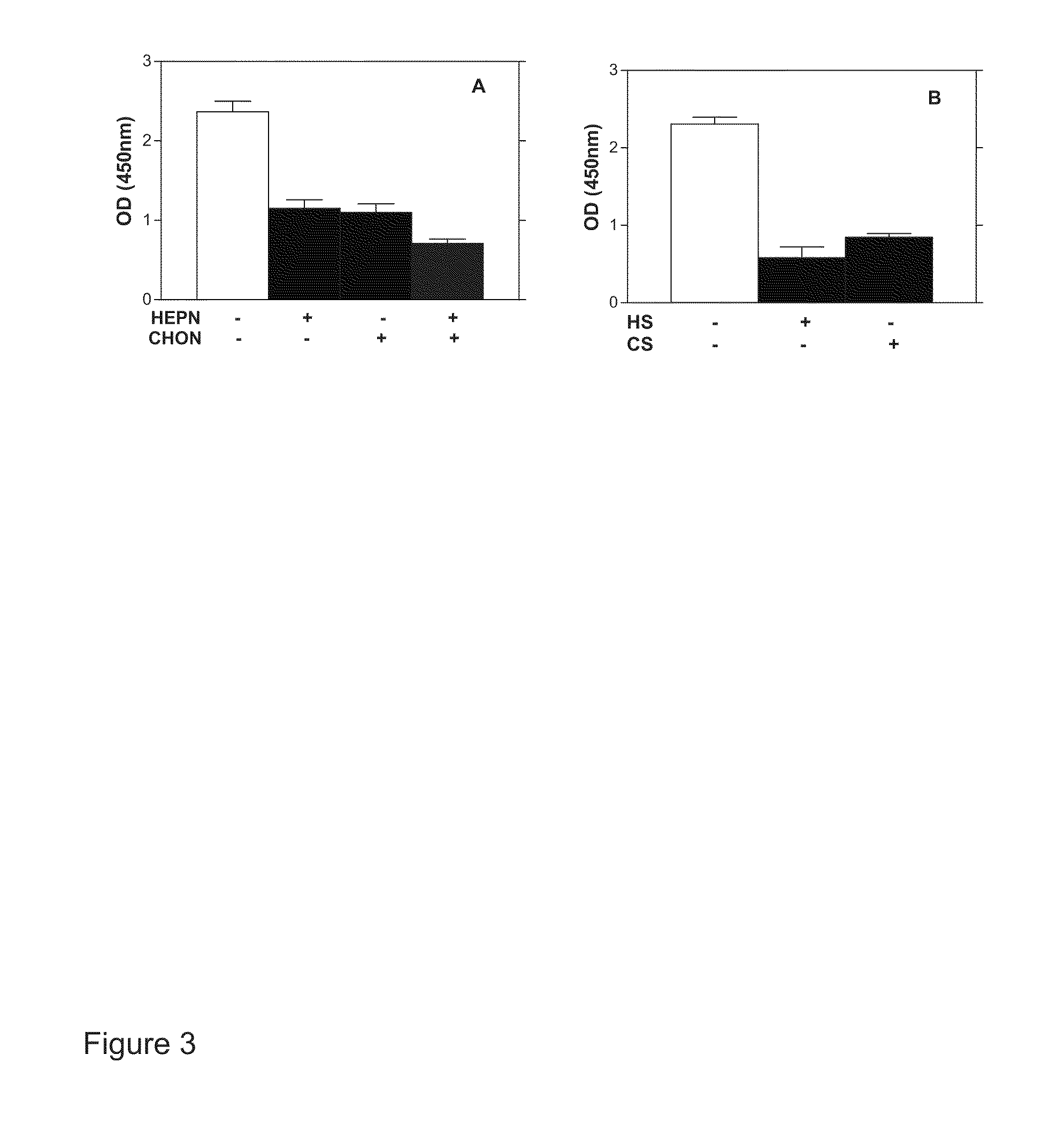Compositions and methods for repair of tissues
a tissue and composition technology, applied in the field of tissue repair, can solve the problems of life-long complications, difficult to properly treat and heal damaged tissues, and difficult to achieve the effect of preventing recurrence and prolonging the life of the patien
- Summary
- Abstract
- Description
- Claims
- Application Information
AI Technical Summary
Benefits of technology
Problems solved by technology
Method used
Image
Examples
examples
[0068]The following discussion shows that domain I of perlecan functions as a sustained release carrier for growth factors necessary for chondrogenesis when immobilized. The experiments reported below show that PlnDI binds to both BMP-2 and collagen II fibrils via its GAG chains in a self assembly process. Thus, PlnDI offers a novel tool to enhance BMP-2 binding and function on scaffolds. As shown in the experiments, BMP-2 interacts with different substrates, including collagen II fibrils complexed with PlnDI. These interactions allow a sustained release of BMP-2 over time. Accordingly, PlnDI can improve substrate BMP-2 immobilization and release from scaffolds and / or fibrils, making it a prime candidate to mediate the sustained or controlled release of growth factors over time to effectively heal cartilaginous tissues or to prevent cartilaginous damage in joints at risk of developing osteoarthritis.
[0069]In addition the experiments show chondrogenic differentiation of C3H101 / 2 cell...
PUM
| Property | Measurement | Unit |
|---|---|---|
| concentration | aaaaa | aaaaa |
| time | aaaaa | aaaaa |
| temperature | aaaaa | aaaaa |
Abstract
Description
Claims
Application Information
 Login to View More
Login to View More - R&D
- Intellectual Property
- Life Sciences
- Materials
- Tech Scout
- Unparalleled Data Quality
- Higher Quality Content
- 60% Fewer Hallucinations
Browse by: Latest US Patents, China's latest patents, Technical Efficacy Thesaurus, Application Domain, Technology Topic, Popular Technical Reports.
© 2025 PatSnap. All rights reserved.Legal|Privacy policy|Modern Slavery Act Transparency Statement|Sitemap|About US| Contact US: help@patsnap.com



